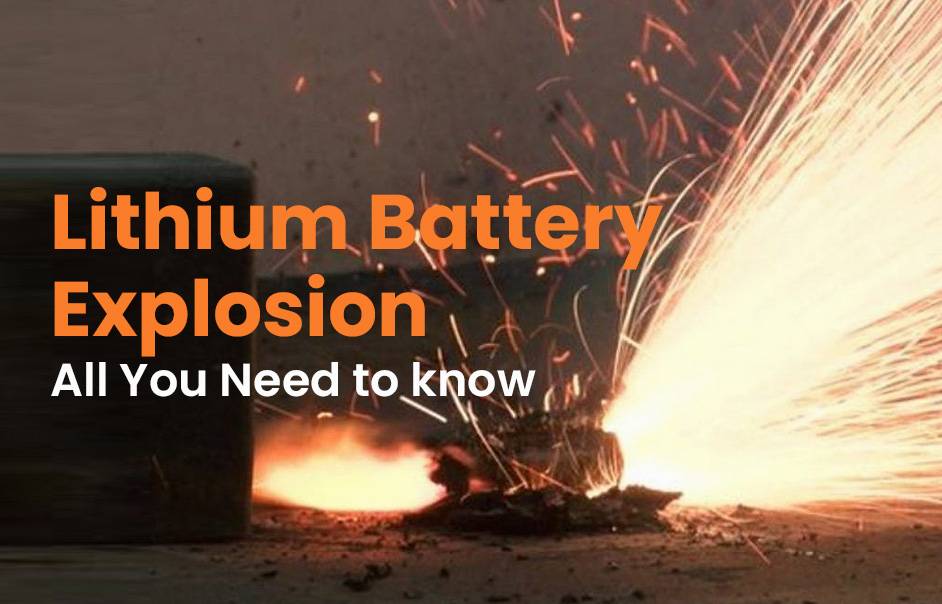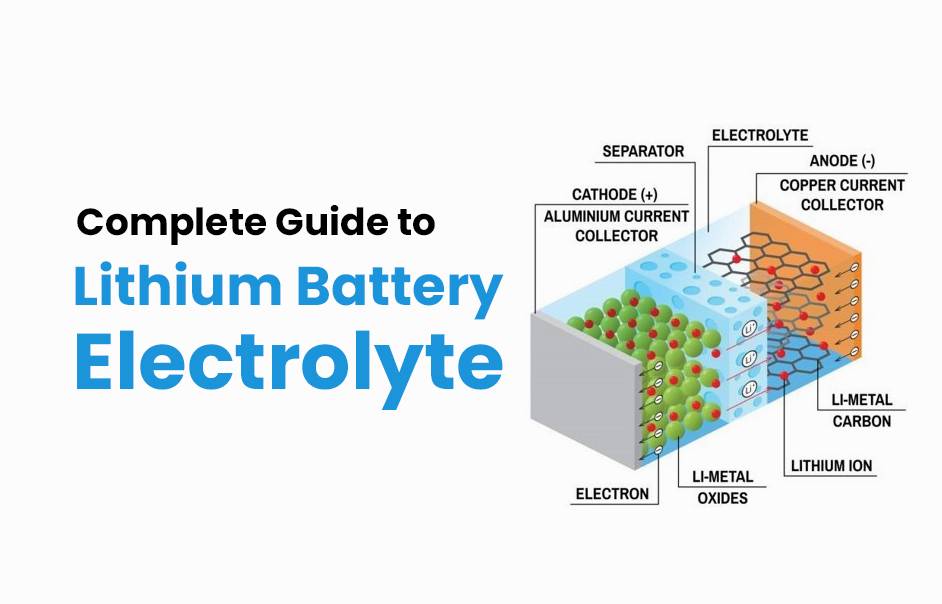- Forklift Lithium Battery
- Golf Cart Lithium Battery
- Rack-mounted Lithium Battery
51.2V 100Ah Rackmount LiFePO4 Battery
8000 times (80% DOD 0.5C)
Optional SNMP for TELECOM - Car Starter Battery
- 12V LiFePO4 Battery
12V 150Ah Lithium RV Battery
Bluetooth App | Self-heating
LiFePO4 | Group 31
UL 1642 | IEC 62619 - 24V LiFePO4 Battery
- 36V LiFePO4 Battery
- 48V LiFePO4 Battery
- 60V LiFePO4 Battery
60V 100Ah Lithium Battery (AGV, AMR, LGV)
Peak Discharge Current 400A
500 x 298 x 349 mm - 72V~96V LiFePO4 Battery
72V 100Ah Lithium Golf Cart Battery
Peak Discharge Current 315A (10S)
740 × 320 × 246 mm - Wall-mounted Lithium Battery
51.2V 100Ah 5kWh
Wall-mounted Battery532 x 425 x 170 mm / LiFePO4
>8000 Cycles (80% DOD 0.5C)
RS485 / CAN-bus
for Solar Home ESS - Home-ESS All-in-One
51.2V 32kWh
All-in-On HESS SystemPowerAll
51.2V / LiFePO4
>8000 Cycles (80% DOD 0.5C)
RS485 / CAN-bus / WiFi
All-in-One for Home ESS
What You Need to Know About Lithium Battery Explosions

Lithium battery explosions occur due to internal chemical or electrical failures that cause extreme heat and pressure buildup, leading to fires or blasts. Understanding these risks and how to prevent them is essential for safe use in devices ranging from phones to electric vehicles and energy storage systems.
What causes lithium battery explosions and fires?
Lithium battery explosions are typically caused by internal short circuits, overcharging, physical damage, manufacturing defects, and exposure to high temperatures. Each factor disrupts the battery’s delicate chemical balance, triggering excessive heat and pressure that can rupture the battery casing and ignite flammable electrolyte materials.
How does thermal runaway trigger a lithium battery explosion?
Thermal runaway is a chain reaction where increased temperature causes chemical reactions inside the battery to accelerate uncontrollably. As heat builds, the battery generates more heat, rapidly increasing internal pressure until the battery casing bursts, releasing flammable gases and causing fires or explosions.
Why do manufacturing defects and physical damage increase explosion risks?
Defects such as contamination from metal particles or insulation failure create unintended electrical paths inside batteries, resulting in short circuits and overheating. Physical damage like punctures or crushing can break the battery’s internal structure, leading to internal shorts, gas formation, and thermal runaway.
How do overcharging and short circuits lead to battery failures?
Overcharging forces excessive lithium ions to deposit on the negative electrode, forming unstable metallic lithium dendrites that pierce internal separators causing short circuits. Similarly, external or internal short circuits cause sudden current surges and heat accumulation, overwhelming battery safety controls and triggering explosions.
What safe handling and storage practices prevent lithium battery fires?
Safe practices include using only lab-certified batteries and chargers, avoiding overcharging, storing batteries in cool, dry places away from flammable materials, inspecting for swelling or damage before use, and never exposing batteries to extreme temperatures or mechanical stress.
How can detection and early intervention minimize fire hazards?
Early detection systems using temperature sensors, smoke detectors, or infrared imaging can alert users to overheating before thermal runaway occurs. Fire suppression systems specialized for lithium battery fires and emergency protocols help contain damage and limit fire spread.
What are the differences in explosion risk among lithium battery chemistries?
Lithium Iron Phosphate (LiFePO4) batteries are inherently safer with higher thermal stability and lower risk of thermal runaway compared to traditional lithium-ion chemistries, reducing explosion hazards. However, all lithium chemistries require careful management to prevent unsafe conditions.
How do innovations in battery design reduce explosion hazards?
Advances such as improved separators, solid-state electrolytes, pressure relief vents, and embedded battery management systems (BMS) help monitor and regulate temperature, voltage, and current, significantly lowering explosion and fire risks.
How do user behaviors influence lithium battery safety?
Proper charging habits, avoiding using counterfeit or damaged batteries, careful transportation, and awareness of warning signs like battery swelling or excessive heat are critical to preventing lithium battery incidents. User education remains a key defense against accidents.
What safety policies and emergency responses manage lithium battery fire risks?
Regulatory standards require battery certification, safe manufacturing, and transport protocols. Emergency response guidelines include evacuation procedures, use of Class D fire extinguishers, and incident reporting. Cities and industries increasingly adopt measures to mitigate lithium battery fire hazards.
Redway Power Expert Views
“Redway Power emphasizes the paramount importance of understanding lithium battery explosion mechanisms to ensure user and device safety. Our 13 years of expertise as a leading OEM battery pack manufacturer focus not only on advanced lithium battery technology but also on rigorous safety integration and quality control. Innovations such as enhanced battery management systems and thermal safeguards directly contribute to unlocking safer power solutions for diverse applications from forklifts to drones. We advocate comprehensive safety education alongside cutting-edge design to reduce risks and foster consumer confidence.” — Expert, Redway Power
Conclusion
Lithium battery explosions result from a complex interplay of chemical, electrical, mechanical, and environmental factors. While thermal runaway is the principal cause, manufacturing quality, safe handling, and technological advances greatly influence safety outcomes. By adopting best practices in battery management, using advanced safer chemistries, and following rigorous safety protocols, users and manufacturers can dramatically reduce the risk of catastrophic lithium battery failures. Insights from industry leaders like Redway Power reinforce the ongoing journey toward safer, reliable lithium battery technologies.
FAQs
What exactly causes lithium battery explosions?
They are caused mainly by internal short circuits, overcharging, physical damage, defects, or exposure to high heat, disrupting chemical stability and causing thermal runaway.
What is thermal runaway in lithium batteries?
Thermal runaway is a dangerous self-heating cycle where increased temperature causes accelerating chemical reactions that can lead to fire or explosion.
Are some lithium battery types safer than others?
Yes, LiFePO4 batteries have better thermal stability and lower explosion risks compared to traditional lithium-ion batteries.
How can I safely store lithium batteries?
Store batteries in cool, dry, ventilated areas away from heat and flammable materials, and avoid physical damage.
What safety measures do manufacturers take to prevent explosions?
Use of battery management systems, improved separators, pressure relief valves, and strict quality controls.
Can user habits cause battery explosions?
Yes, misuse, overcharging, using counterfeit products, or ignoring damage signs can trigger battery failures.
What should I do if my lithium battery starts to swell or overheat?
Stop using it immediately, disconnect power, and replace it safely to prevent explosion risk.
Does Redway Power produce safe lithium batteries?
Yes, Redway Power’s experience and manufacturing excellence ensure high safety and quality standards across various lithium battery applications.




























